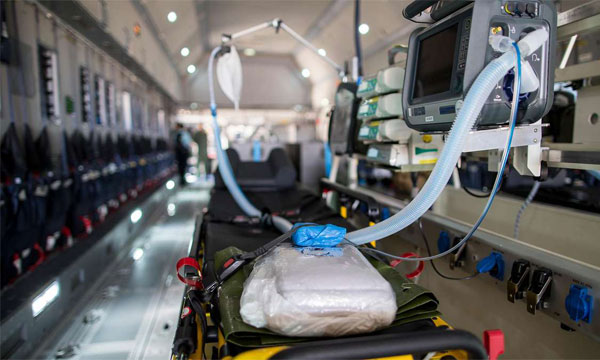08/08/2018
A 400M allemand : Prêt pour les MEDEVAC

L'Allemagne dispose à présent de la capacité d'évacuation aéromédicale à bord d'un A400M. Le premier kit « Intensive care aeromedical evacuation » (ICAE) a été mis en service ce 1er août, avec un délai d'alerte à 12 heures. Au total, la Luftwaffe disposera à terme de quatre kits, intégrable aux A400M en quatre heures, pour prendre en charge le rapatriement de blessés - aussi bien allemands qu'européens, voire des autres pays membres de l'OTAN.
Le kit ICAE permettra de prendre en charge jusqu'à six blessés allongés avec oxygénothérapie et appareils de réanimation, dont deux en unité de soins intensifs, deux blessés de catégorie intermédiaire et deux blessés plus légers. L'équipe médicale est quant à elle composée de 11 personnels, de différentes spécialités. (source).
01/08/2018
Cricothyrotomie: Chirurgicale et tous les ans ++
A bench study comparing between scalpel-bougie technique and cannula-to-Melker technique in emergency cricothyroidotomy in a porcine model
Chang SS et Al. Korean Journal of Anesthesiology 2018;71(4):289-295.
Background: The ideal emergency cricothyroidotomy technique remains a topic of ongoing debate. This study aimed to compare the cannula-to-Melker technique with the scalpel-bougie technique and determine whether yearly training in cricothyroidotomy techniques is sufficient for skill retention.
Methods: We conducted an observational crossover bench study to compare the cannula-to-Melker with the scalpel-bougie technique in a porcine tracheal model. Twenty-eight anesthetists participated. The primary outcome was time taken for device insertion. Secondary outcomes were first-pass success rate, incidence of tracheal trauma, and technique preference. We also compared the data on outcome measures with the data obtained in a similar workshop a year ago.
Results: The scalpel-bougie technique was significantly faster than the cannula-to-Melker technique for cricothyroidotomy (median time of 45.2 s vs. 101.3 s; P = 0.001). Both techniques had 100% success rate within two attempts; there were no significant differences in the first-pass success rates and incidence of tracheal wall trauma (P > 0.999 and P = 0.727, respectively) between them. The relative risks of inflicting tracheal wall trauma after a failed cricothyroidotomy attempt were 6.9 (95% CI 1.5–31.1), 2.3 (95% CI 0.3–20.7) and 3.0 (95% CI 0.3–25.9) for the scalpel-bougie, cannula-cricothyroidotomy, and Melker-Seldinger airway, respectively. The insertion time and incidence of tracheal wall trauma were lower when the present data were compared with data from a similar workshop conducted the previous year.
Conclusions: This study supports the use of a scalpel-bougie technique for cricothyroidotomy by anesthetists and advocates a yearly training program for skill retention
